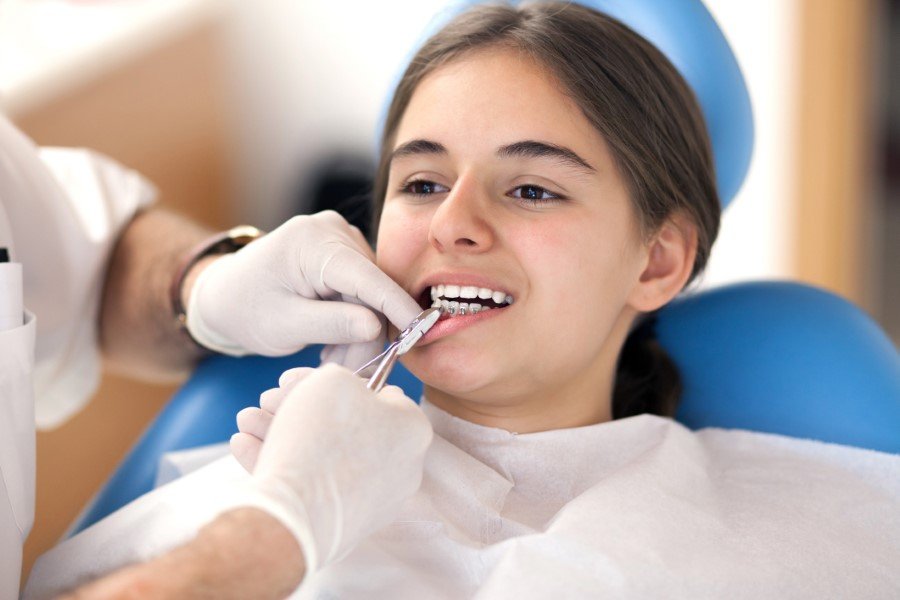
Introduction
Are you considering getting braces in California but unsure about the cost? This article will provide you with a comprehensive guide on the average price range for braces in California. We’ll explore different factors that can influence the cost and discuss various types of braces available. By the end, you’ll have a better understanding of what to expect when it comes to the cost of braces in California.
Table of Contents
- Factors Affecting the Cost of Braces
- Types of Braces
- Traditional Metal Braces
- Ceramic Braces
- Lingual Braces
- Invisalign
- Average Cost of Braces in California
- Payment Options and Insurance Coverage
- Financing Options for Braces
- Choosing the Right Orthodontist
- Tips for Reducing the Cost of Braces
- The Benefits of Getting Braces
- Potential Risks and Considerations
- Maintaining Oral Health with Braces
- Frequently Asked Questions (FAQs)
- FAQ 1: How long do I need to wear braces?
- FAQ 2: Can I eat normally with braces?
- FAQ 3: Will braces affect my speech?
- FAQ 4: Are there any age restrictions for getting braces?
- FAQ 5: Can braces fix severe bite problems?
- Conclusion
1. Factors Affecting the Cost of Braces
The cost of braces can vary based on several factors. These factors include the type of braces, the severity of your dental condition, the duration of the treatment, the orthodontist’s experience and expertise, and the location of the dental clinic. Understanding these factors will help you estimate the cost and make an informed decision.
2. Types of Braces
Traditional Metal Braces
Metal braces are the most common and affordable option. They consist of metal brackets and wires that apply gentle pressure to gradually align your teeth. Metal braces are highly effective and suitable for various dental conditions.
Ceramic Braces
Ceramic braces are similar to metal braces but use tooth-colored or clear brackets that blend with the natural color of your teeth. These braces are less noticeable and popular among individuals concerned about the aesthetics of traditional metal braces.
Lingual Braces
Lingual braces are placed on the back surface of your teeth, making them virtually invisible from the front. These braces offer a discreet treatment option, but they can be more challenging to clean and adjust compared to other types.
Invisalign
Invisalign is a popular alternative to traditional braces. It uses a series of clear, removable aligners to straighten your teeth gradually. Invisalign offers the advantage of being virtually invisible and provides greater flexibility during the treatment.
3. Average Cost of Braces in California
The cost of braces in California can vary, but on average, traditional metal braces range from $3,000 to $7,000. Ceramic braces generally cost between $4,000 and $8,000. Lingual braces and Invisalign tend to be more expensive, with prices ranging from $5,000 to $10,000 or more. It’s important to note that these are approximate figures, and the final cost may vary depending on the factors mentioned earlier.
4. Payment Options and Insurance Coverage
Many orthodontic offices in California offer payment plans to help make braces more affordable. These plans often involve monthly installments spread over the duration of the treatment. Additionally, dental insurance may partially cover the cost of braces. It’s crucial to check with your insurance provider to understand the extent of coverage and any limitations or requirements.
5. Financing Options for Braces
If you don’t have dental insurance or require additional financial assistance, various financing options are available. Some orthodontic practices offer in-house financing or work with third-party financing companies. These options allow you to pay for your braces over time, easing the financial burden.
6. Choosing the Right Orthodontist
Selecting the right orthodontist is crucial to ensure quality treatment and a satisfactory outcome. Look for a licensed and experienced orthodontist who specializes in the type of braces you’re considering. Take the time to research and read reviews to find a reputable orthodontic practice in your area.
7. Tips for Reducing the Cost of Braces
- Consult multiple orthodontists to compare prices and treatment options.
- Inquire about discounts for upfront payment or cash payments.
- Consider orthodontic schools or teaching institutions that offer discounted rates for treatment provided by supervised students.
8. The Benefits of Getting Braces
Besides improving the alignment and appearance of your teeth, braces offer various benefits. They can correct bite issues, reduce the risk of tooth decay and gum disease, improve speech, and enhance overall oral health. Investing in braces can lead to a confident smile and long-term oral well-being.
9. Potential Risks and Considerations
Before getting braces, it’s essential to understand the potential risks and considerations. These include temporary discomfort or soreness, difficulty eating certain foods, oral hygiene challenges, and the need for regular adjustments and check-ups. Your orthodontist will guide you on how to manage these aspects effectively.
10. Maintaining Oral Health with Braces
Proper oral hygiene is crucial during orthodontic treatment. Your orthodontist will provide instructions on how to clean your braces and teeth effectively. Regular brushing, flossing, and using specialized tools like interdental brushes or water flossers will help maintain oral health throughout the treatment process.
FAQs
1: How long do I need to wear braces?
The duration of braces treatment can vary depending on your dental condition. On average, it may range from 1 to 3 years. Your orthodontist will provide a personalized treatment plan and estimate the duration.
2: Can I eat normally with braces?
While some adjustments to your diet may be necessary, you can generally eat most foods with braces. Avoid sticky or hard foods that can damage the braces and follow your orthodontist’s instructions regarding dietary restrictions.
3: Will braces affect my speech?
Braces may temporarily affect your speech as you adjust to having them in your mouth. However, with practice and time, most individuals adapt quickly, and any speech changes should resolve on their own.
4: Are there any age restrictions for getting braces?
Braces can be beneficial at any age, and there are no specific age restrictions. Both children and adults can benefit from orthodontic treatment. It’s never too late to achieve a straight and healthy smile.
5: Can braces fix severe bite problems?
Yes, braces can effectively correct various bite problems, including overbites, underbites, and crossbites. Your orthodontist will assess your specific condition and develop a treatment plan tailored to your needs.
Conclusion
Getting braces in California is an investment in your oral health and overall well-being. The cost of braces can vary based on several factors, including the type of braces and the severity of your dental condition. By exploring different options and consulting with orthodontic professionals, you can find the best solution that fits your budget and requirements. Remember, the long-term benefits of having straight teeth and a confident smile make braces a worthwhile endeavor.




